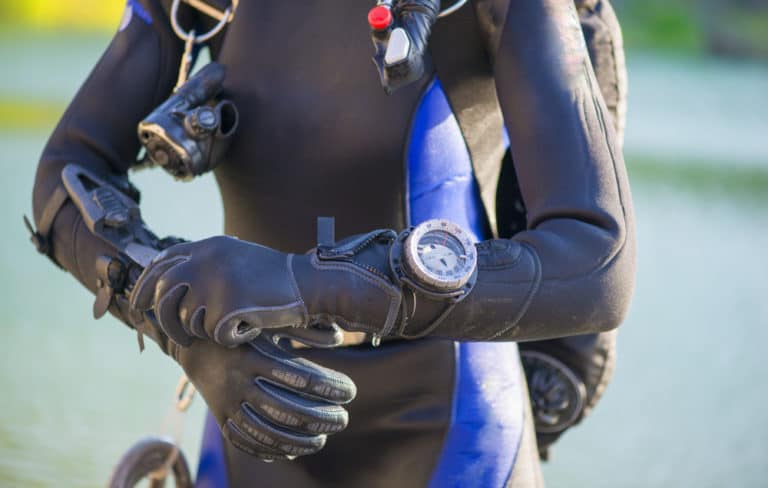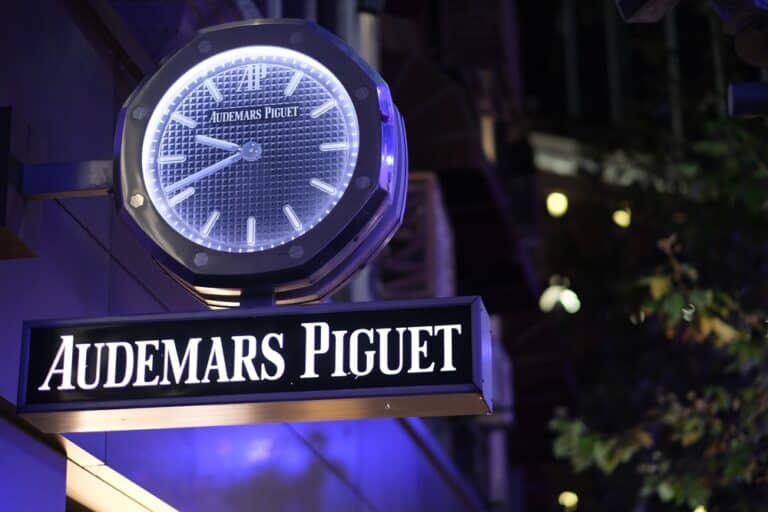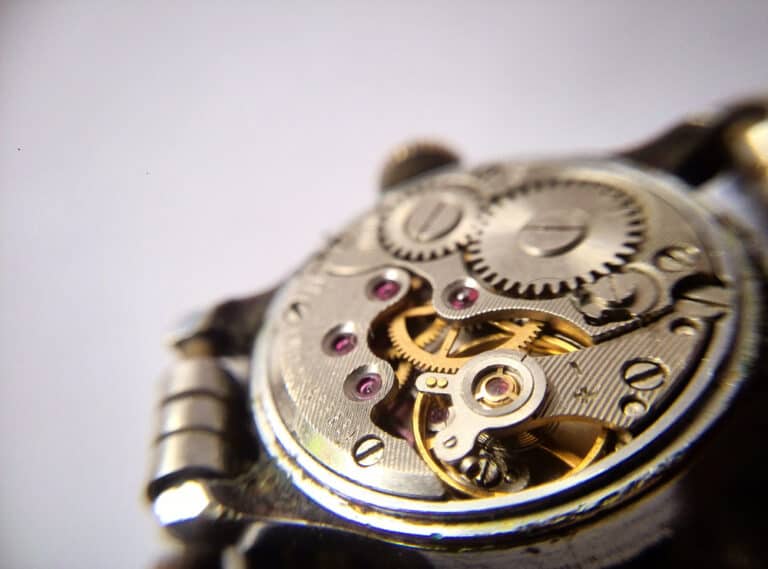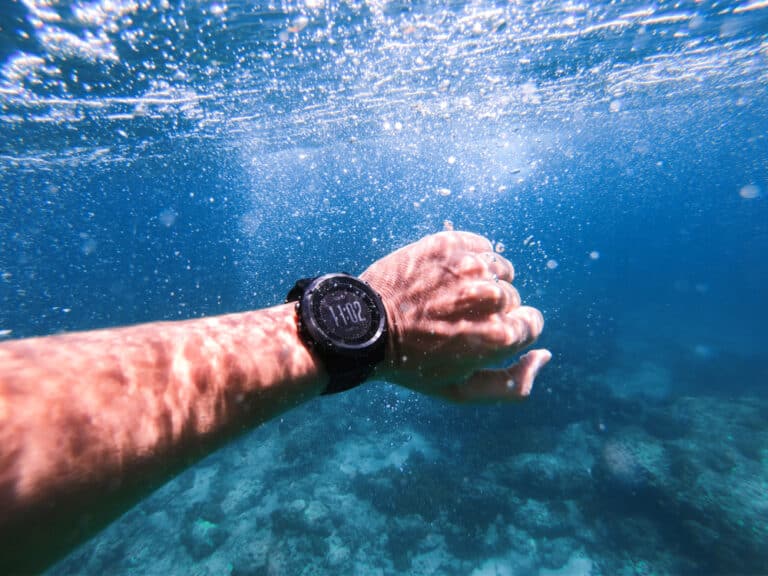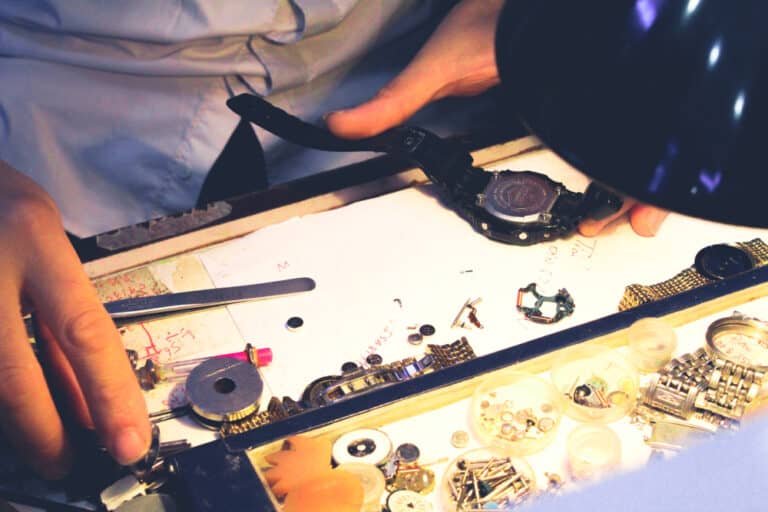Modern chronographs use a variety of power sources to activate the watch’s movement. These available power sources include manual main springs, automatic winding mechanisms, battery power, and even watches with solar-powered battery recharging.
Quartz and digital chronographs are battery powered and use quartz crystals to vibrate at exactly 32,768 times a second, after which the second hand moves one space. The other types of chronographs use a mechanical movement powered by a wound main spring.
Watch, and chronograph movements are finely balanced and are one of the closest mechanisms to achieving the impossible goal of perpetual motion. The amount of battery power used to cause this movement is minute, meaning the batteries last a very long time.
The Different Types Of Chronographs Which Use Batteries
Two of the four types of chronographs available commercially use batteries.
Chronographs are categories of watches that incorporate the normal time functions of a conventional watch with the ability to measure lap times and calculate speed and distance.
The chronograph function increases the energy usage of watches, and therefore, the power source has to be able to provide sufficient energy while also maintaining the operation of the time keeping functions.
Apart from digital watches, a chronograph function adds 30% more components to a watch, and while this makes the movement very interesting to observe, it does mean that more energy is required to activate the function.
There Are Four Types Of Chronograph
There are three types of chronographs, two of which use batteries.
- Mechanical Chronographs (hand wound)
- Automatic Chronographs (self-wound)
Mechanical Chronographs (Hand Wound)
Mechanical watches do not have batteries and are powered by a coiled spring known as a mainspring.
Mechanical chronographs are manually activated by the user winding the crown (knob) on the side of the instrument, which tightens the flexible main spring inside.
As this spring unloads, the time the watch can run diminishes. When the mainspring is wound tight, the natural action is to unwind (or relax) and release the stored energy, which provides the power for the movement.
The degree to which the mainspring is wound creates the “Power Reserve,” which is the measure of the contained energy that is stored in the mainspring and, therefore, is the time the chronograph can run until it needs to be rewound.
Some mechanical watches have a power reserve indicator which is a very helpful feature because it enables the owner to rewind the mainspring before the power reserve is extinguished.
A simple power reserve indicator uses a differential screw. The screw is mounted on a threaded shaft parallel to the barrel. The top end of the differential screw has a tapered section that moves the power reserve indicator as it moves up or down on the threaded shaft.
Automatic Chronographs (Self-Wound)
As discussed, mechanical watches store energy in the mainspring.
Automatic watches are essentially manual watches with an automated rewinding function that uses the natural movement of the arm to transfer energy to the mainspring.
While this means that automatic watches do not need to be manually rewound with the crown, they normally maintain the crown and can be manually wound if required.
The automatic winding system is generally incorporated into the watch movement or is added on top of it as a module.
There are three types of automatic winding systems.
- Rotor based automatic winding
- The bumper movement
- Micro rotor based automatic winding
Rotor Based Automatic Winding
In this category of winding system, the mechanism has a rotor (which is a centrally-mounted weighted element) and a set of wheels that transfer the rotor’s energy to the watch’s mainspring.
The Bumper Movement
The Bumper Movement uses a weighed mass that oscillates, transferring energy to the mainspring through a set of balanced wheels.
Micro Rotor Based Automatic Winding
The micro rotor system incorporates a smaller rotor in the watch movement. The system works similarly to the larger rotor based system but is smaller and more compact.
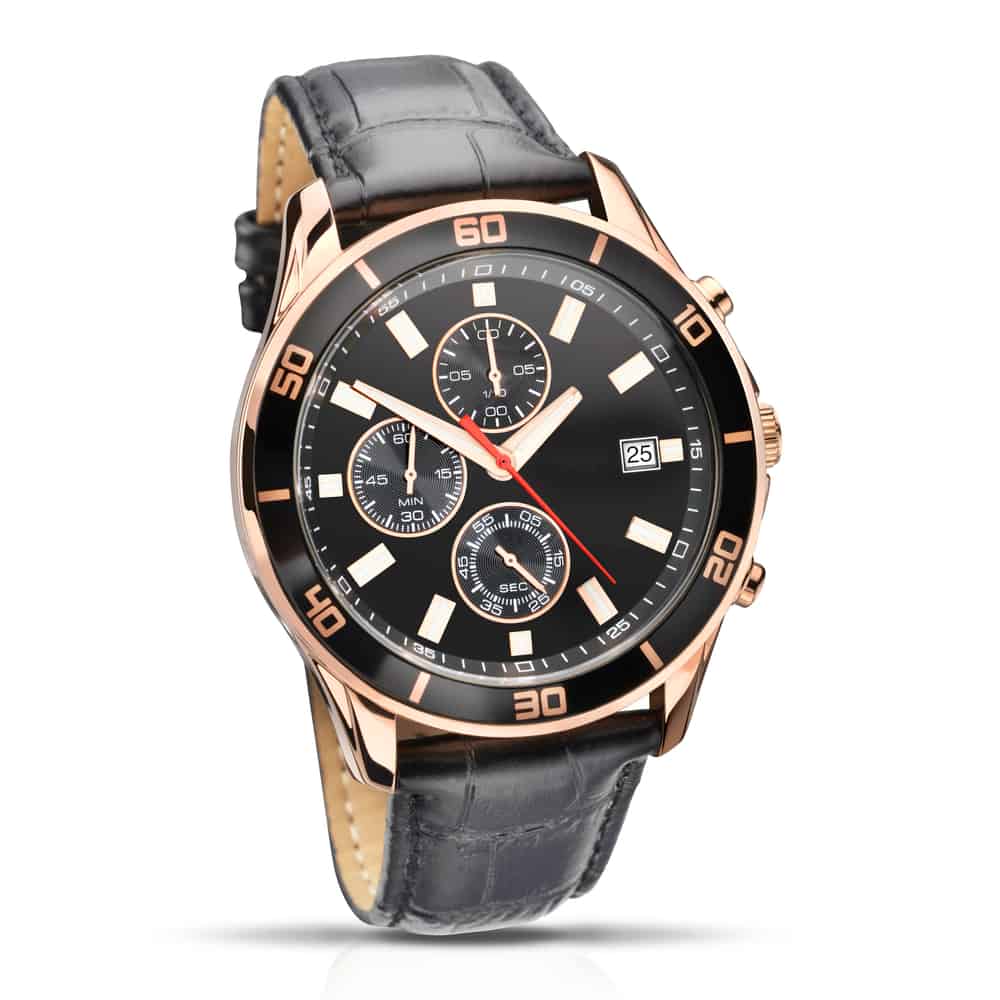
Quartz Chronographs ( Battery Operated)
Quartz chronographs use a battery to activate the watch’s movement.
The system works in the following steps:
- The battery provides a current to the watch’s electrical circuit.
- This subsequent electrical current makes the quartz vibrate at exactly 32,768 times a second.
- After 32,768 vibrations, the battery produces a single electric pulse.
- The pulse provides enough energy to power a very small electric motor.
- In turn, the electric motor activates the watch’s gears.
- The gears move the second hand by one second, and the process starts again.
The Advantages Of A Quartz Watch
Affordable quartz watches provide the following benefits:
- They are more accurate than mechanical watches.
- A quartz chronograph watch offers more functions
- They provide better overall consistency.
- With fewer moving parts, they do not need to be maintained as often as mechanical watches.
- It is easier to set them up and leave them alone, whereas mechanical watches must be monitored and regularly rewound.
- With fewer moving parts, quartz watches can be used in harsher environments.
Digital Chronographs (Battery Operated)
Instead of the hands on a conventional watch, time values are displayed on the digital LED or LCD chronograph screens as numbers or symbols.
A digital watch uses batteries for power.
The watch works as follows:
- A battery provides an electrical current.
- The current causes the quartz crystals in the watch to vibrate at exactly 32,768 times a second.
- The crystal vibrations are sensed by a silicon chip.
- The silicon chip converts the vibrations into regular pulses.
- The pulses are translated to numerals on the watch’s liquid crystal display (LCD).
Digital Chronographs have fewer moving parts than any other watch type and therefore are more accurate and reliable.
Solar Powered Chronographs (Battery Operated)
Solar powered watches work in the same way that Quartz or Digital instruments do.
The only difference is that solar powered batteries use a solar cell to convert the sun’s energy into electrical current used to recharge the battery.
High end solar battery systems are eco-friendly because they are supposed to last the watch’s life and never need replacing.
Conclusion
Quartz and Digital Chronographs use batteries for power, whereas mechanical chronographs and automatic chronographs use a mechanical main spring to provide the energy needs to activate the mechanism.

